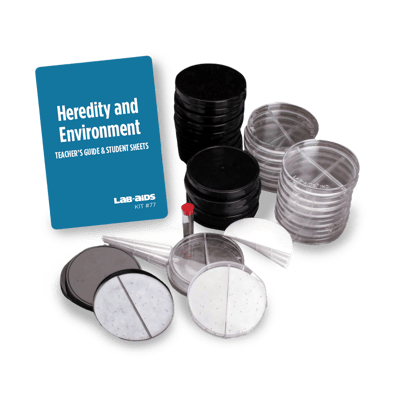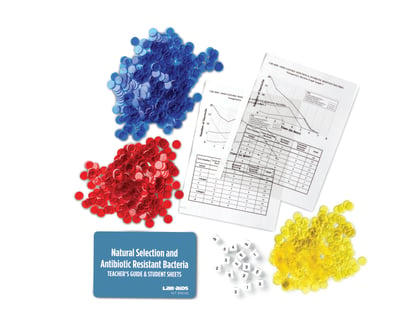Genetic Equilibrium, The Hardy-Weinhard Principle, and Natural Selection

With this simulation, students use a physical model to gain perception into the genetic processes involved when natural selection is functioning on a population in genetic equilibrium. By developing a basic understanding of the Hardy-Weinberg Principle and associated equations, students can more easily grasp an understanding of the actual complexity of natural selection in nature.
Details at a Glance
- 1-3 Days | 1-3 ~50 minute class periods
- 1 Activity
- Accommodates unlimited classes, each with 16 groups of 2 students
- Meets our criteria for supporting literacy
- All materials are non-consumable
- Includes digital resources
Scientific Concepts
•The principles of genetic equilibrium and natural selection relate to the process of evolution.
•The Hardy-Weinberg equations can be corroborated with data collected from a physical simulation.
•Allele frequencies in equilibrium will remain in equilibrium in the absence of mutation, migration, or selection.
•Natural selection operates against the less favorable phenotypes in a population resulting in a larger proportion of favorable phenotypes in subsequent generations.
KEY VOCABULARY: allele, genetic equilibrium, natural selection, dominant, genotype, phenotype, evolution, Hardy-Weinberg principle
Guides & Student Sheets
Our kits and modules provide you with everything you need so you can open, review, and teach the material confidently the next day.
- Comprehensive Teacher Guide with background information, detailed instruction, example data and answers
- Student Sheets with age appropriate background information, full procedure(s), and analysis items
- Materials necessary for the investigation (beyond common classroom items)
- Safety Data Sheets
Kit Components
- 1 Teacher’s Guide
- 30 Student Worksheets and Guides
- 16 Shakers
- 960 Alleles, plastic, red
- 640 Alleles, plastic, white






